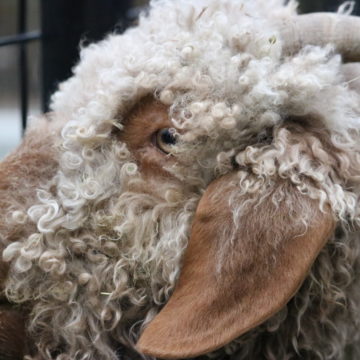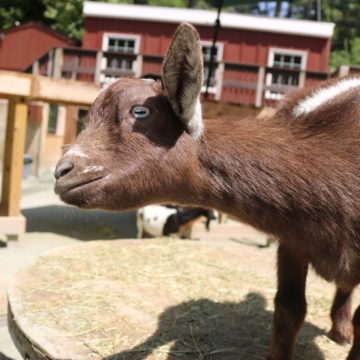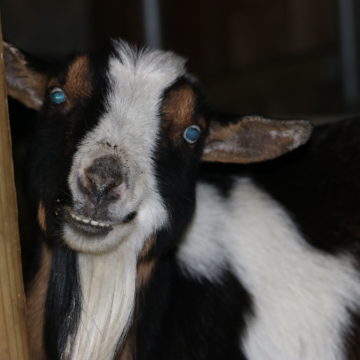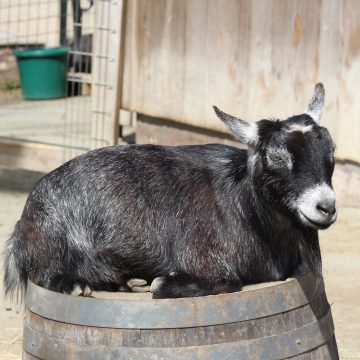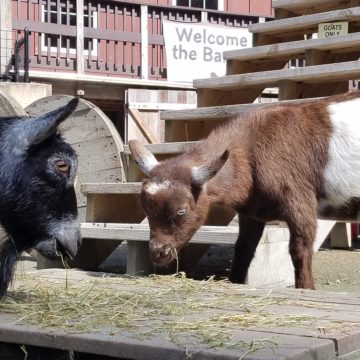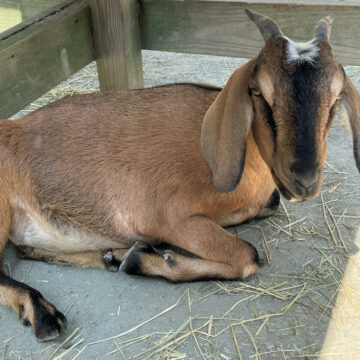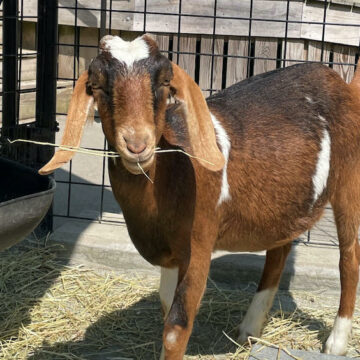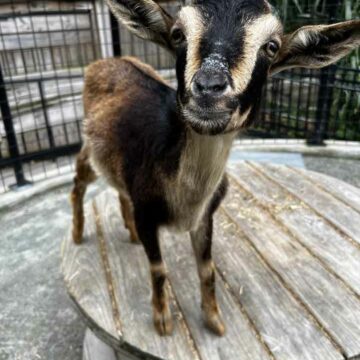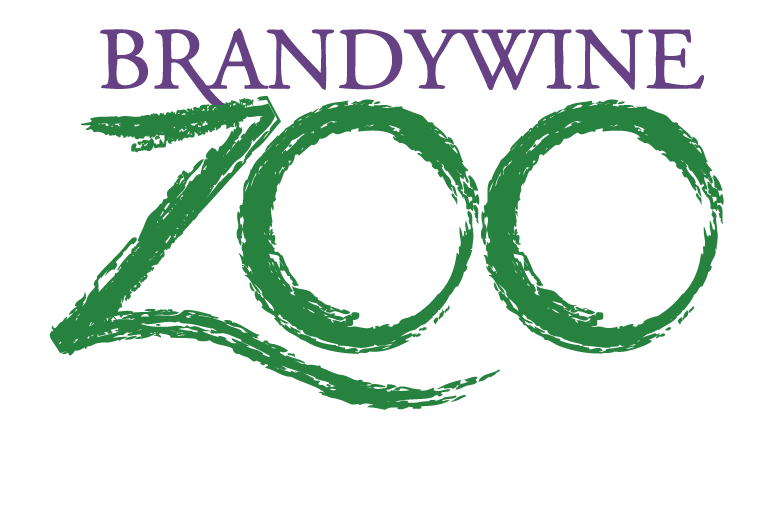Domestic Goats
CAPRA HIRCUS
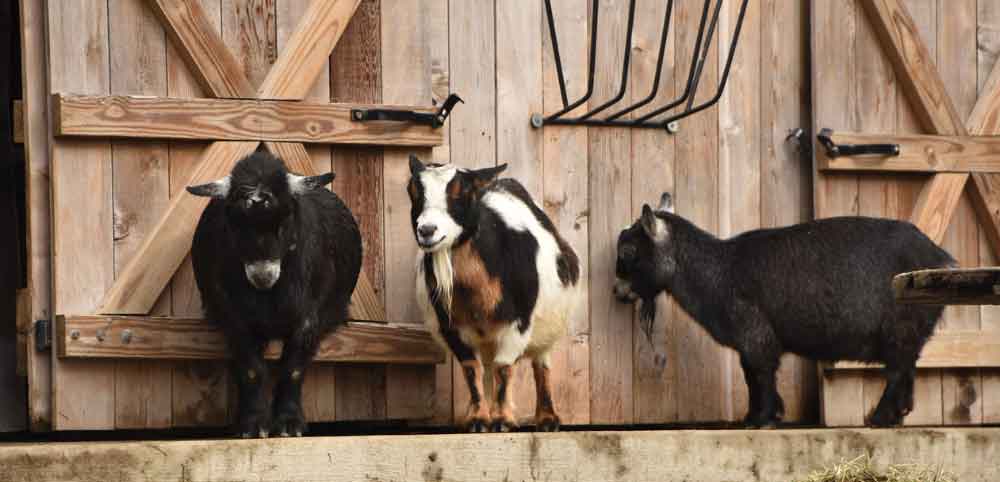
HABITAT
Domestic goats can adapt to living alongside humans in almost every habitat.
GEOGRAPHIC REGION AND RANGE
Domestic goats can be found anywhere humans live; their wild counterpart (the bezoar) is mainly found in Turkey and Iran.
DIET
Hay, shrubs, grain, grass, leaves, fruits, and vegetables
LIFESPAN
Under Human Care: Depending on breed 12-18 is common, though some domestic goats have lived over 20 years.
STATUS
Status Not Evaluated
The conservation status of San Clemente Island Goats is listed as Critical by The Livestock Conservancy. This is the most threatened ranking for domestic animals in the US with less than 200 annual registrations.
FUN FACTS
Nigerian goats can produce over 1 liter of milk in a day! Their milk is very creamy and makes delicious cheese and yogurt. That’s why our Nigerian dwarf goats, Brie, Monty, and Colby, are all named after cheeses.
Goats have four stomach chambers to break down tough grasses and hay.
The earliest domestication of goats was 10,000 years ago in western Iran.
Goats in cartoons are often shown eating everything – even tin cans! Goats are only able to digest plant matter, but when food is scarce they might also eat paper products like cardboard or paper – like the labels on cans.
Goats are used for their meat, milk, fur, manure and for clearing overgrown plants like kudzu vine and poison ivy.
What are AZA Zoos doing for Domestic Goats?
As a domestic species, domestic goats do not need to be managed under a Species Survival Plan program. However, two distant cousins of the domestic goat – the Nubian ibex, (a desert dwelling goat species) and the Turkenian makor (also known as the screw-horned goat) are. These SSPs are conservation breeding programs that ensure genetic diversity and species health across all AZA institutions.
More images of our Domestic Goats
